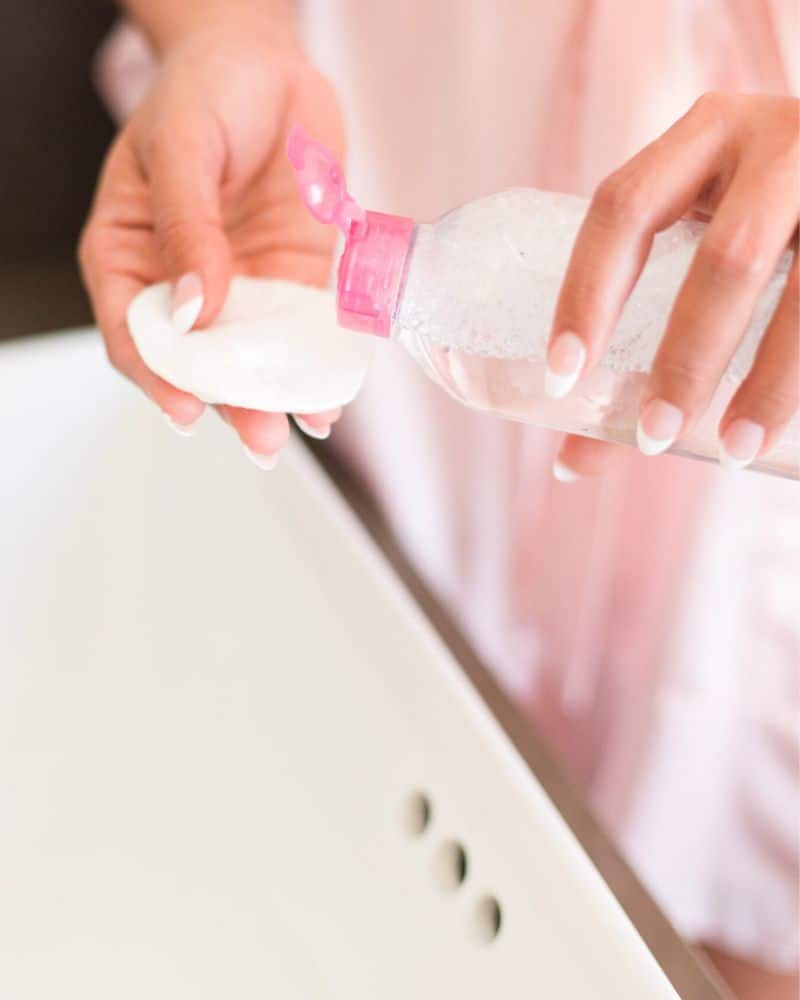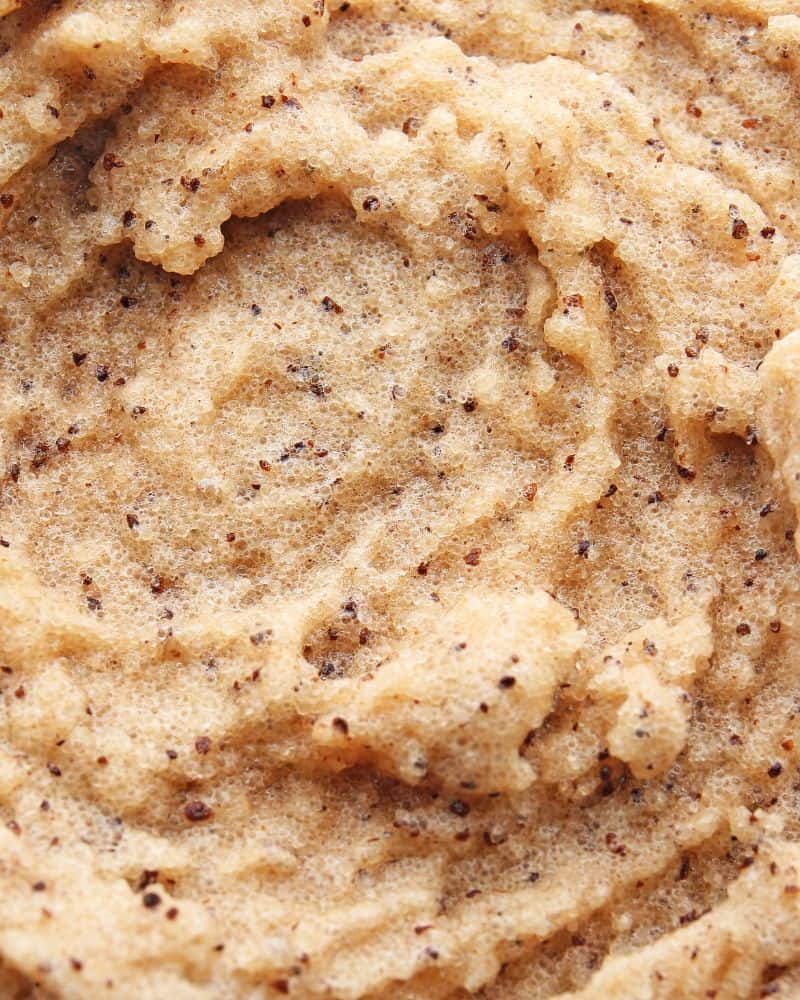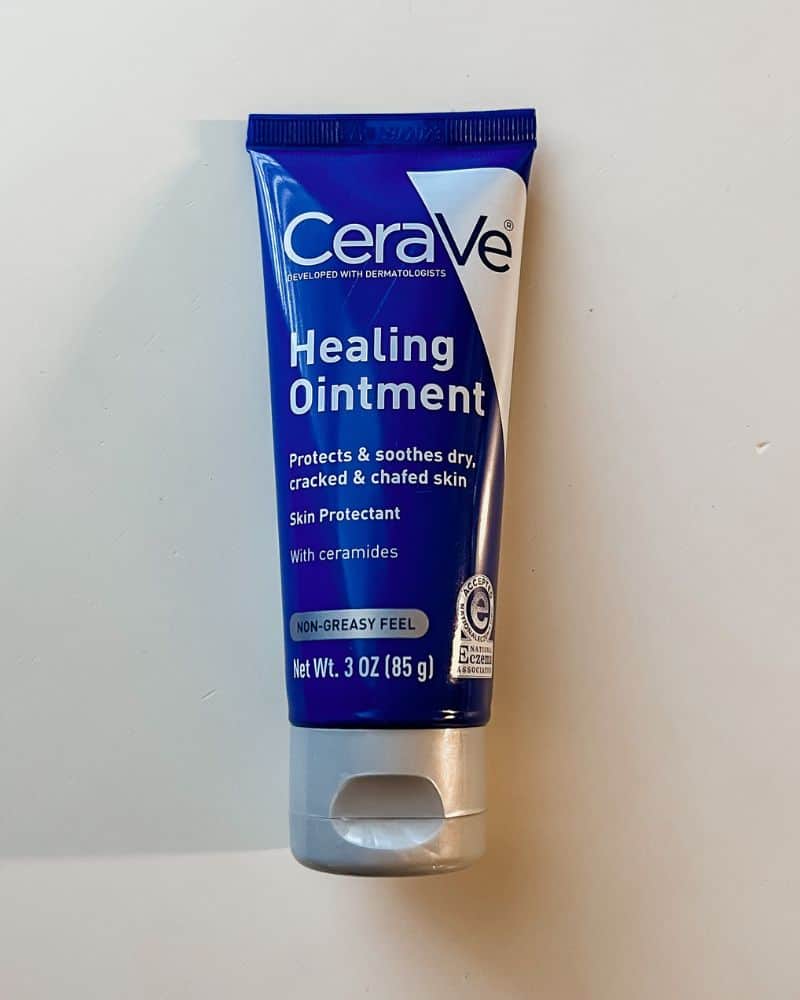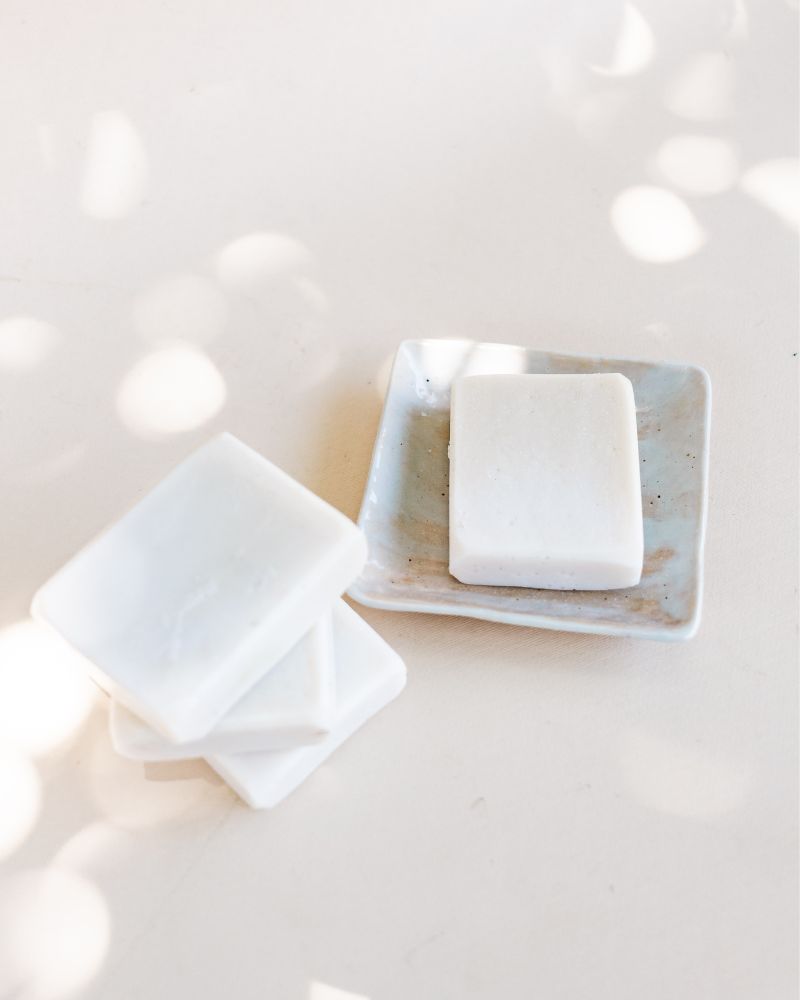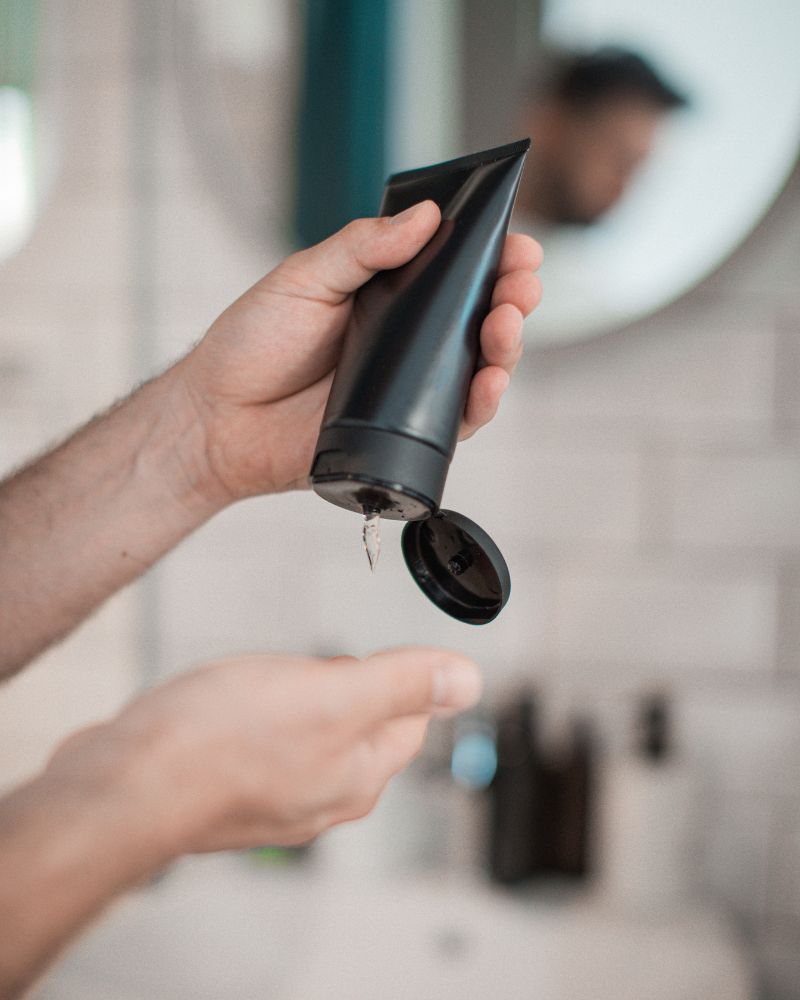Emulsion Vs Cream: What’s The Difference?
This post may contain affiliate links.
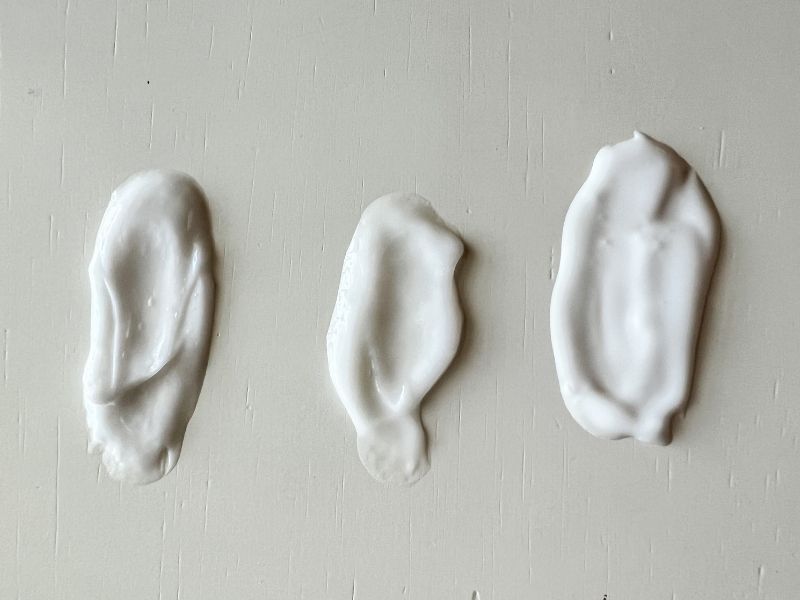
Emulsion vs Cream
Made popular by Korean beauty, emulsions can have a great place in anyone’s skincare routine by providing lightweight moisture and hydration plus targeted benefits depending on the formulation. But how does an emulsion compare to a cream? While it may sounds like they do the same thing, they’re actually pretty different in terms of formulation. Let’s take a look at emulsion vs cream in detail to help you decide which product is right for your skin.
What Is An Emulsion
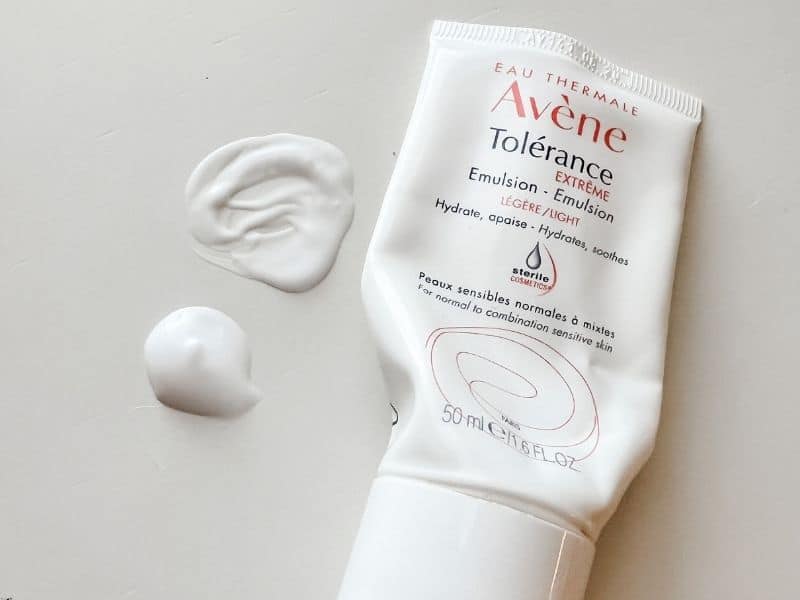
You’ve probably heard the term ’emulsion’ if you took any kind of chemistry in school, and the same principle applies here. An emulsion is a mixture of two liquids that do not naturally combine or blend together by themselves. Basically they don’t mix well, like oil and water. You can stir and stir, but the oil and water always stay separated. That is until an emulsifier is added, then the two can blend together nicely.
So what’s that got to do with skincare?
Well emulsions are insanely popular in the Korean beauty world, so you’ll often see these mention if you dabble in Korean skincare.
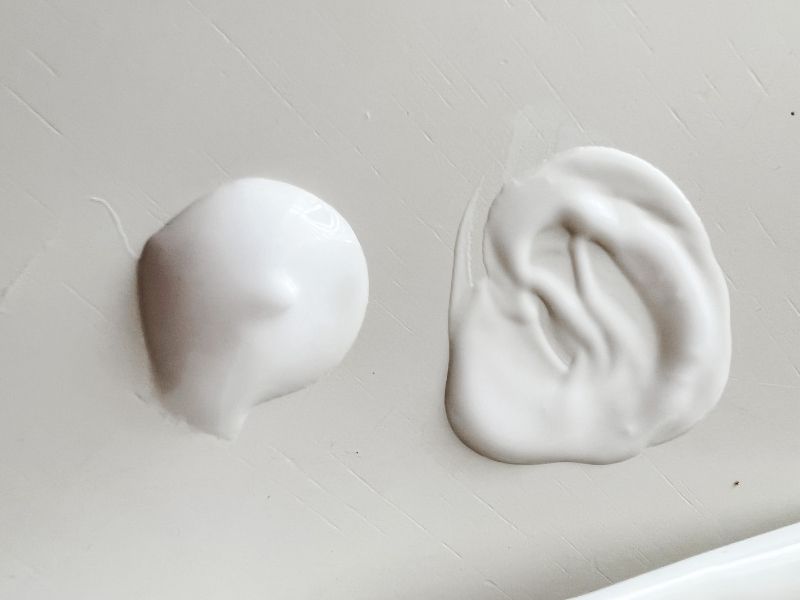
Think of skincare emulsions as a lightweight moisturizer. Like a moisturizer but slightly thinner because they are water-based. They’re usually either milky or gel-like in texture, depending on the formulation and ingredients.
As you can see with the Avene emulsion pictured above, it’s very milky. Most emulsions are milky and this one is on the thicker side but still feels lightweight.
Emulsions typically offer all the benefits of creams and moisturizers, just with a lighter texture and finish, which makes them ideal for oily skin types, but they are suitable for all skin types and can be layered with other products for those with drier skin.
Though emulsions do typically have oils in them, they feel very lightweight and non-greasy on the skin. Since they do have oils, they can be a great additional step to add extra moisture and hydration for those with dry skin types.
What Are The Benefits of Emulsions?
All emulsions will help to hydrate the skin and keep moisture locked in. But depending on the ingredients and formulation, emulsions can help with a variety of skin concerns from lines and wrinkles to dehydration or acne. It all depends on the ingredients in the product. In general, here the benefits of emulsions in skincare:
- Provide lightweight hydration
- Usually non-comedogenic (meaning it won’t clog your pores)
- Absorbs quickly into the skin
- Strengthen’s the skin barrier
- Can target specific skin concerns
For more oily skin types, emulsions can be used by themselves, and many people like to use them as a daytime moisturizer because they’re so lightweight and don’t cause any extra greasiness.
Who Should Use Emulsions?
All skin types can benefit from using emulsions in their skincare routine. For more oily skin types, they will provide enough moisture and hydration alone, but drier skin types can layer them with more hydrating and nourishing serums and moisturizers.
Emulsions can be especially beneficial to add some extra ingredients to target specific skin concerns as well as add in extra hydration and moisture into your skincare routine.
Oily Skin
Oilier skin types may benefit from emulsions since they are so lightweight. They can provide non-greasy moisture and hydration which is exactly what oily skin needs.
Look for humectants like hyaluronic acid, glycerin, panthenol and honey to attract moisture into the skin to keep it plump but not greasy.
Acne-Prone Skin
Acne-prone skin can also benefit from emulsions because they are lightweight and typically non-comedogenic, which means they won’t clog pores or lead to acne or breakouts.
Some emulsions may also have acne fighting ingredients like salicylic acid or green tea to fight acne causing bacteria and balance the skin.
Combination Skin
Combination skin can certainly benefit from using skincare emulsions since they can lightly hydrate the oily areas like the t-zone and nourish the drier areas like the cheeks.
Like oily skin, combo skin types can benefit from humectants to add lightweight hydration as well as balancing ingredients like green tea.
Sensitive Skin
Sensitive skin types can also benefit from emulsions to provide needed moisture to keep skin healthy. Look for soothing ingredients like aloe, centella asiatica, allantoin, oats, licorice or chamomile to help soothe irritation and reduce redness.
Dry Skin
Dry skin is one of the best skin types for emulsions because they can add an extra layer of hydration, moisture and barrier repairing ingredients that skin needs. They are best paired with other nourishing serums and moisturizers/creams.
In addition to humectants like hyaluronic acid and glycerin, dry skin should also looks for ceramides, butters, squalane and other plant oils.
How To Use Emulsions
In general, you always want to apply skincare from thinnest to thickest. That means any type of watery toner, essence or serum should come before an emulsion (as they’re typically thicker).
If you don’t use any serums or other thinner skincare products, just apply the emulsion after cleansing.
You can follow with moisturizers, creams and oils.
If you use any kind of active like retinol or benzoyl peroxide, you can either apply those first and follow with the emulsion, or you can apply the emulsion first and then “buffer” the retinol or other active ingredient. This can help to reduce any dryness and irritation and is especially helpful when using retinoids.
Best Emulsions For Face
innisfree Clarifying Emulsion
Why We Love It
An oil-balancing and skin clearing emulsion to help treat and prevent acne, unclog pores, regulate oil and provide lightweight hydration to acne-prone and oily skin types
Ingredients We Love
- Bija Seed Oil
- Salicylic Acid (Willow Bark Extract)
- Niacinamide
Cons: contains fragrance
Etude House SoonJung 10 Free Moist Emulsion
Why We Love It
An ultra-soothing and barrier-repairing emulsion packed with all the calming ingredients to treat even the most sensitive skin and restore the protective skin barrier
Ingredients We Love
- Centalla Asiatica
- Panthenol
- Squalane
- Fatty Acids
Naturium Azelaic Acid Emulsion 10%
Why We Love It
A powerful emulsion that helps to smooth skin texture, unclog pores, brighten the skin and fade discolorations. A high concentration of azelaic acid can help with redness, rosacea and other texture and tone issues.
Ingredients We Love
- Azelaic Acid
- Niacinamide
- Retinol
- Squalane
- Oats
SUR.MEDIC+ Super Hyaluronic 100TM Aqua Emulsion
Why We Love It
A ultra-moisturizing and hydrating emulsion packed with humectants like panthenol and hyaluronic acid, plus barrier repairing and soothing ingredients for skin that’s smoother, softer and more radiant.
Ingredients We Love
- Hyaluronic Acid (3 different types)
- Panthenol
- Ceramides
- Amino Acids
- Oats
What Is A Cream?
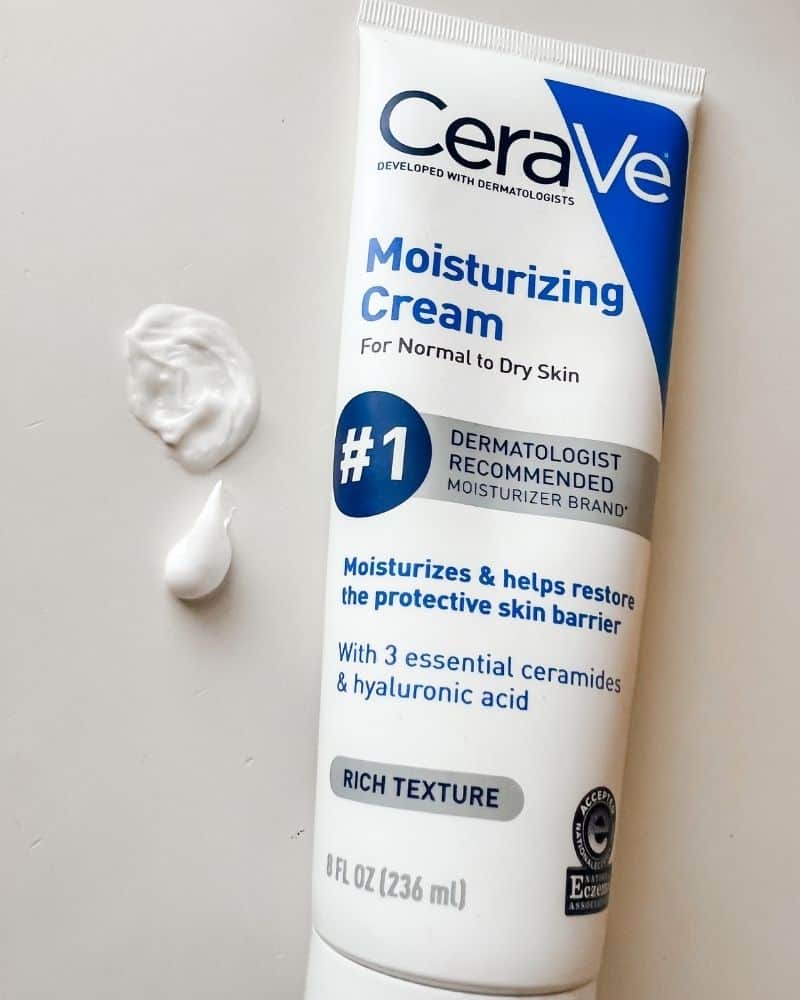
A cream is a type of moisturizer that’s typically thicker than a lotion. While lotions are water based, creams often contain heavier ingredients like plant oils, butters and even waxes. Creams are designed to nourish and soften the skin while locking in moisture to keep skin from getting dry and flaky.
Creams are usually so thick that they come in a jar container because they are to hard to squeeze out of a tube. But there are lighter creams that come in pumps or tubes (which are much more hygienic than jars).
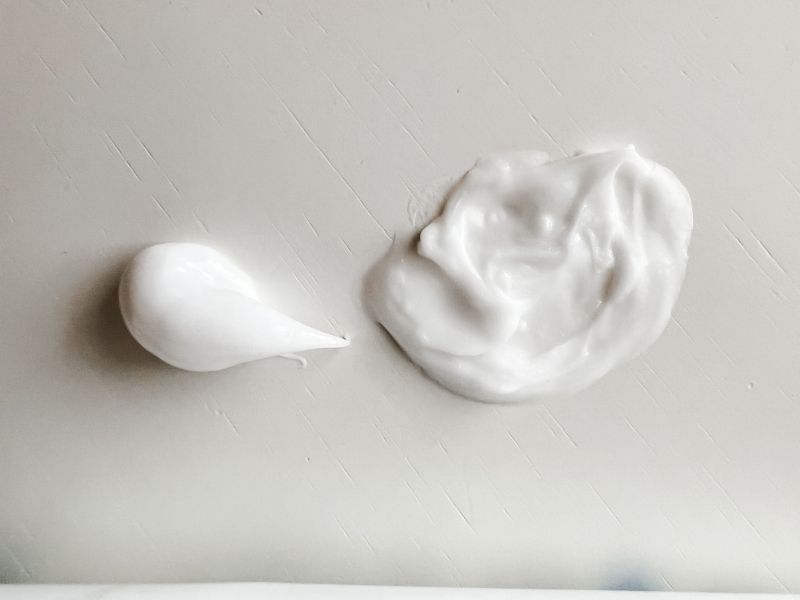
Creams are also designed to create a barrier on the skin to protect skin against cold air, wind and other potential irritants. At the same time, creams can lock in hydration to prevent trans-epidermal water loss to keep skin from dehydrating. They can also help to keep the skin barrier intact and nice and strong.
Moisturizing creams can also contain active ingredients to help target specific skin concerns. A day cream may have vitamin c and antioxidant to help protect the skin against damage. A night cream, on the other hand, may have repairing ingredients like peptides or retinol to work on the skin while you sleep.
In general, night creams tend to have more powerful ingredients like retinol or peptides, but day creams can also have beneficial ingredients.
But don’t worry, you don’t need a separate day cream and night cream if you don’t want one. As long as you’re using a well-formulated moisturizing cream, you can use it both day and night. You also don’t need a fancy day or night cream if you are using actives in your other skincare products. It all depends on your skin goals and skin type.
What Are The Benefits of Creams?
Like emulsions, creams can have different benefits, depending on the formulation. In general, they provide deep moisture and barrier repairing benefits to the skin.
- Nourish the skin
- Soften rough patches or flaky skin
- Strengthens the skin barrier
- Locks in moisture
- Smooths skin texture
For most skin types, a cream is enough on its own, but extremely dry skin types may benefit from layering a cream with an emulsion or lighter moisturizer.
Who Should Use Creams?
Creams are ideal for people with dry skin or for anyone who needs extra moisture. They can also be beneficial for people with sensitive or normal skin types. Combination and oily skin types may prefer a gel-cream that’s much lighter than a typical moisturizing cream.
Dry Skin
Dry and extremely dry skin types will most benefit from using a moisturizing cream. If It’s formulated well for dry skin, it’s thick and rich with tons of nourishing ingredients to add hydration back into the skin and keep it locked in.
Look for barrier-repairing ingredients like shea butter, plant oils, ceramides, cholesterol and fatty acids as well as humectants like hyaluronic acid and glycerin.
Sensitive Skin
Sensitive skin types can also benefit from creams, especially if they contain soothing ingredients like centella asiatica, aloe, panthenol, allantoin or oats.
Creams can help to keep the skin barrier strong which can reduce the risk of irritation and sensitivity to products or environmental factors.
Acne-Prone Skin
Believe it or not, acne-prone skin can actually benefit from using a good cream. Most acne treatments tend to be drying and can lead to dehydration, irritation and a compromised skin barrier. And guess what? All those issues can lead to more breakouts!
Acne-prone skin types should look for a non-comedogenic moisturizing cream with lightweight hydrators like hyaluronic acid or panthenol.
Oily Skin
Depending on the formulation, oily skin types can also use creams. While most people think of creams as being super thick (which most are), there are also some lightweight creams and even gel-creams which can provide more lightweight moisture to oily skin types.
Again, any kind of lightweight hydrator like hyaluronic acid can be beneficial. Balancing ingredients like salicylic acid or green tea can also help to control and regulate oil production.
Aging Skin
Those concerned with aging or those with already aging skin will certainly see benefits from a well-formulated night cream. Most night creams have lots of goodies like retinol, peptides, amino acids and other anti-aging ingredients to help smooth lines and wrinkles and stimulate collagen.
How To Use Creams
Creams will most always be last in your skincare routine, as they’re usually the thickest product. You can follow up with sunscreen during the day or a facial oil at night.
Creams can be applied morning or night (or both). While many people prefer to use a thicker cream at night, you can certainly use a moisturizing cream during the day as well.
Moisturizing creams typically layer very well on top of other products like serums. Using a cream on top of hydrating serums, essences or toners can help to improve their effects because they lock in all that hydration.
Emulsion Vs Cream Comparison
Emulsion
Cream
Emulsion vs Cream vs Serum
A serum is a highly concentration skincare product that typically has a pretty watery consistency. Serums usually contain active ingredients like vitamin c, antioxidants, chemical exfoliants, peptides, etc. Serums are used to target specific skincare concerns from aging to acne.
Serums also contain more lightweight ingredients like hyaluronic acid or glycerin to add in hydration.
Serums are suitable for all skin types and they can work on a variety of skincare concerns. They may contain soothing ingredients like centella asiatica or allatoin to soothe sensitive skin. Or they may contain salicylic acid or niacinamide to help treat acne.
Emulsion vs Lotion vs Cream
From left to right: Cream, Lotion, Emulsion
From top to bottom: Cream, Lotion, Emulsion
Pictured products: CeraVe Moisturizing Cream, CeraVe Daily Lotion, Avene Tolerance Extreme Emulsion
An emulsion is a lightweight moisturizing product that’s usually white in color. They’re more water-based than creams, but still contain great amounts of nourishing ingredients like humectants and barrier-repairing ingredients to visibly improve the look of the skin.
The consistency of an emulsion is usually somewhere between a serum and a lotion. They’re not as watery as a serum, but they’re also thinner than a cream. While creams are usually used as the last step in your skincare routine, emulsions can be applied before or after serums depending on the formulation.
Lotions are water-based and do not contain as many heavy ingredients as creams. Although lotions may still have oils or butters, their water content keeps them thinner and lightweight.
Creams are thick and rich and contain more oils and butters than water. Creams are more nourishing and best for drier skin types.
Best Moisturizing Creams
Naturium Niacinamide Gel Cream 5%
Why We Love It
A lightweight gel cream that’s packed with a high concentration of niacinamide to help balance oil production, reduce pore size, brighten the skin and promote a healthy barrier. It’s perfect for oily and acne prone skin types.
Ingredients We Love
- Niacinamide
- Coconut Fruit Juice
- Hyaluronic Acid
Neutrogena Hydro Boost Hyaluronic Acid Hydrating Gel-Cream
Why We Love It
A best-selling version of the already popular Neutrogena Hydroboost gel. This gel cream is thicker and is perfect for drier skin types. Hydrating humectants instantly plump the skin and keep moisture locked in all day.
Ingredients We Love
- Hyaluronic Acid
- Glycerin
- Beeswax
CeraVe Moisturizing Cream
Why We Love It
A restoring and barrier repairing cream designed to nourish dry skin and repair the skin barrier to keep hydration and moisture locked in.
Ingredients We Love
- Ceramides
- Fatty Acids
- Cholesterol
- Hyaluronic Acid
Related Post: Cerave Moisturizing Cream Vs Lotion
Emulsion Vs Cream FAQ’s
Is Emulsion The Same As Cream?
No, emulsions and creams are different, although they’re both designed to help hydrate and moisturize the skin, emulsions are a lightweight lotion with higher water content, whereas creams are thick and rick and have more butters and oils.
When Should I Use Emulsion?
You can use emulsions in your skincare routine morning and night. Emulsions layer well with other products. When layering, follow the thinnest to thickest rule and use emulsions after any toners, essences or serums but before lotions or creams.
More oily skin types can use emulsions as their sole moisturizer as long as it’s hydrating enough.
Does Emulsion Go Before Cream?
Yes, emulsions should always go before creams as creams are thicker.
Which Is Better Emulsion Or Serum?
Serums have more active ingredients that are designed to target a specific skin concern. Emulsions can also have active ingredients, but in general, serums are more powerful. They very lightweight and typically are not enough to be used on their own. Serums and emulsions can be used together.
Is Emulsion Better Than Moisturizer?
An emulsions is basically just a lightweight moisturizer and those with oily skin types may find that emulsions work better for them. They’re typically water based and very light so they don’t cause any greasiness or feel heavy on the skin.
Emulsion Vs Cream: Wrap Up
Emulsions and creams are both designed to hydrate and moisturize the skin to keep it healthy, but the ingredients and formula are what makes them so different. If you’re having a hard time choosing between emulsion vs cream, take a look at your skin type. Oily skin and acne-prone skin types will benefit from using emulsions because they are so lightweight and non-greasy. Dry skin types will benefit more from moisturizing creams, but they can use emulsions as an extra layer of hydration and moisture.

